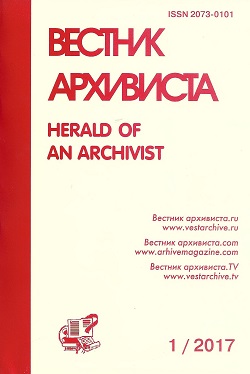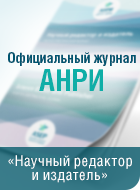УДК 930.85
DOI 10.28995/2073-0101-2019-3-887-899
Elena V. Barysheva
Russian State University for the Humanities, Moscow, Russian Federation
The “New Woman” in the Context of Soviet Festive Culture of the 1920s-30s
Abstract
The article reviews techniques and methods for solving the “women’s question” in Soviet Russia in the 1920s-30s. The declared “women's equality” was in fact a double burden on the shoulders of female workers. To help the “new woman” to combine her family responsibilities and factory work, the Soviet state took a number of steps for facilitating her life. Public canteens, factory-kitchens, laundries, tailor shops, and preschool institutions were to liberate the woman from “kitchen slavery” and give her an opportunity to devote herself to production. The declared social equality in practice meant utmost simplification of family life. Of equal importance in creating the “new woman” image were sports events and physical education, much promoted by the Soviet state as a recreation and a means of managed formation of the “new woman.” Calling women to take an active part in the festivities contributed to their assimilation of social and political attitudes, to the formation of a new system of political values, to the sustention of approved behavior. A case-study of visual propaganda and propaganda during mass games, physical culture parades, and demonstrations on the public holidays highlights the Soviet authorities’ efforts to create an image of the “new woman.” The sources include the 1920s-30s propaganda materials: published and unpublished journalistic writings of Soviet statemen, instructional guidelines and scenarios for public holidays, as well as publications in the 1920s-30s media, all of which demonstrated the ideal of the Soviet woman, which real women tried to imitate on weekdays, as well as on holidays. The article examines how this new identity — of woman who succeeded at the factory and in everyday life — was formed by means of organized mass games, demonstrations, and festivities.
Keywords
Historical sources, archival documents, “new woman,” transformation of gender relations, community facilities, festive culture, formation of a new identity.
Download the article: barysheva_doi
References
G?NTHER, H. Poyushchaya Rodina (Sovetskaya massovaya pesnya kak vyrazheniye arkhetipa materi) [The Singing Motherland (Soviet mass song as an expression of the archetype of mother). In Russ.]. IN: Voprosy literatury, 1997, pp. 46–61.
DASHKOVA, T. Vizual'naya reprezentatsiya zhenskogo tela v sovetskoi massovoi kul'ture 30-kh godov [Visual representation of the female body in the Soviet mass culture of the 1930s. In Russ.]. IN: Logos, 1999, no. 11-12, pp. 131–155.
ZDRAVOMYSLOVA, E., TEMKINA, A. Gendernoe (gendered) grazhdanstvo i sovetskii etakraticheskii poryadok [Gendered Citizenship and the Soviet Ethocratic Order]. IN: Transformatsiya gendernykh otnoshenii: zapadnye teorii i rossiiskie praktiki [Transformation of gender relations: Western theories and Russian practices. In Russ.]. Samara, Samarskii un-t publ., 2003, pp. 27–61.
MASLYUK, N. V., YARSKAYA-SMIRNOVA, E. R. Gender i sotsial'naya struktura [Gender and Social Structure. In Russ.]. Saratov, Saratovskii gosudarstvennyi tekhnicheskii un-t publ., 2000, 52 p.
PUSHKAREV, A., PUSHKAREVA, N. Rannyaya sovetskaya ideologiya 1918-1928 godov i “polovoy vopros” (o popytkakh regulirovaniya sotsial'noy politiki seksual'nosti [Early Soviet ideology of 1918-1928 and the “sexual question” (on attempts to regulate the social policy of sexuality. In Russ.]. IN: Sovetskaya sotsial'naya politika 1920-kh-1930-kh godov: ideologiya i povsednevnost' [Soviet social policy in the 1920s-30s: Ideology and every-day life]. Moscow, 2007, pp. 199–227.
SOKOLOVA, N. Protestantizm, marksizm i vizual'nost': k probleme gendernykh reprezentatsii [Protestantism, Marxism, and Visuality: On the Problem of Gender Representations. In Russ.]. IN: Transformatsiya gendernykh otnosheniy: zapadnyye teorii i rossiyskiye praktiki [Transformation of gender relations: Western theories and Russian practices. In Russ.]. Samara, Samarskii un-t publ,, 2003. – pp. 258-267.
TARTAKOVSKAYA, I. Muzhchiny i zhenshchiny v legitimnom diskurse [Men and women in legitimate discourse. In Russ.]. IN: Gendernye issledovaniya, 2000, no. 4, pp. 246–265.
ULYANOVA, S, SIDORCHUK, I., SOSNINA, M. Socio-cultural leisure space of Soviet women in the 1920s. Электронный ресурс. Режим доступа: http://dx.doi.org/10.15405/epsbs.2018.02.161 (дата обращения 15.04.2019).
About author
Barysheva Elena Vladimirovna, PhD in History, associate professor, Russian State University for the Humanities, department of history and theory of historical science, head of the department, Russian Federation, +7-495-250-71-09, This e-mail address is being protected from spambots. You need JavaScript enabled to view it
Submitted 26.04.2019, published (for citation):
BARYSHEVA, E. V. “Novaya zhenshchina” v kontekste sovetskoi prazdnichnoi kul'tury 1920-1930-kh gg. [The “New Woman” in the Context of Soviet Festive Culture of the 1920s-30s. In Russ.]. IN: Vestnik arhivista / Herald of an Archivist, 2019, no. 3, pp. 887-899. doi 10.28995/2073-0101-2019-3-887-899














